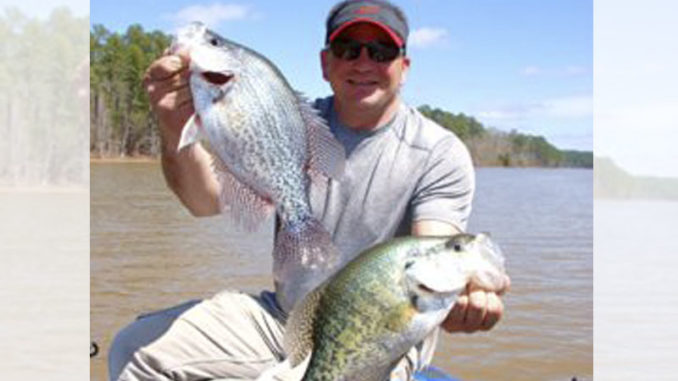
With the attention of plenty of Carolina anglers diverted to other pursuits, now is the time to catch some slabs. Here are some places to try.
Almost every angler who has ever set the hook on a crappie looks forward to the spring. It’s when fish move en masse to the shallows for the annual ritual of reproduction. They stake out spawning locations, and anything that resembles something to eat will often get nailed by a slab, either on the nest or moving between the closest creek channel and the shallows.
During the fall, when water temperatures begin their descent from the upper 80s to more fish-friendly levels, much of the same behavior takes place, save for the spawning.
One of the big reasons why a lot of sometime crappie anglers miss witnessing this pattern is because they are off chasing other pursuits – like college football or deer hunting.
According to Ed Duke and Rod Hall, who rely on fairly specialized techniques when crappie move shallow in the fall, they are missing out on some of the year’s best fishing.
Trolling takes center stage for seasoned slab anglers this month
“October means it’s transition time on just about all of the Piedmont lakes in North Carolina,” said Duke, a resident of Concord, N.C., who owns Southern Crappie Rods and has fished just about every lake in the Southeast that holds crappie. “Even when crappie are running up into real shallow water, I find that I can consistently catch more, and more importantly, larger crappie by trolling than I could with any other method.”
Duke’s picks as the top fall crappie lakes in North Carolina, based on a combination of the numbers of fish, size of fish and structure that sets up well for fall patterns, are Jordan and Badin.
When fishing at Jordan, which is south of the Raleigh/Durham area, Duke always heads up the lake to the Farrington Point area, looking for dingy water entering the lake. He’s really looking for creek channels that feed the lake’s main body.
“Crappie use those channels like highways,” he said. “In that part of the lake, there is still a lot of old wood – stumps and logs and laid down trees – that line the channels. You can find some easy pickings working the edges of those channels by tight-line trolling.”
Live minnows are unbeatable this time of year
With one or two anglers in the front of his boat, Duke will slow-troll, pushing rods out the bow. He said some anglers like to use a two-hook rig separated by a three-way swivel. Others prefer a simpler Carolina rig with only one hook per rod. Either way, he uses live live minnows or jigs tipped with minnows.
“I like the minnow for the scent and a hair jig for the action and some added color,” he said. “I use a 1/16-ounce hair jig in either red, pink, or white, and I’ll tip that with a medium minnow. Another good choice is the Charlie Brewer Slider which will give the bait lots of action even when the boat isn’t moving fast.”
Duke said Badin Lake on the Yadkin River chain stands out because of its structure.
“Badin is going to be mostly black crappie. And the water is going to be pretty clear,” he said. “Anytime you have both black crappie and clear water in the same lake, you need to fish tight to the structure.”
Most of that structure will be in the form of brush piles sunk in the lake by anglers. Some of that brush is out by itself. And some is adjacent to a boat dock.
Trolling isn’t the only way to go
“When you get into the backs of some of the deeper creeks at Badin, you’ll start to mark brush piles,” he said. “That’s where you need to drop a minnow right on top of the brush.”
Although the setup looks very much like Duke’s tight-line trolling setup, the method is quite different. He will put three or four 9-foot Southern Crappie Rods in rod holders around the bow. But instead of trolling, he simply tries to hold the boat steady, with the baits dangling over the top of the structure.
“I’m using a No. 6 gold Eagle Claw hook with a minnow and a split-shot. And I’m just going to sit on top of that brush,” he said. “It’s easy to get a limit of good, 11- and 12-inch, eating- size fish this way. When they stop biting at one spot, go to the next one.”
Wall, from Ninety Six, S.C., said Clarks Hill and Lake Moultrie are his picks as two of the best lakes in South Carolina for fall crappie, based on numbers and size.
“Once the water temperatures drop below 80 degrees, it’s almost a prespawn type pattern on both lakes,” he said. “You’ll also have a fall shad spawn that hits when the water temperatures reach 70 degrees. And that means the shallows will be loaded with bait— bait everywhere.”
Double up with a two-hook rig
Wall chooses the creeks he fishes at Clarks Hill based on water temperature and water color. He prefers any location back in a creek run where he has less than 18 inches of visibility. He’ll long-line troll single 1/48- and 1/32-ounce jigs out the stern of his boats.
“The stained water makes the crappie suspend up in the water column,” he said. “We’re not talking about deep water. I’m going to fish in 12 to 15 feet of water or less, but I want the fish up off the bottom.”
Wall loves Moultrie because the lake produces some of the biggest crappie in South Carolina. Unlike other lakes that are flooded rivers and offer creek arms and tributaries leading from top to bottom, Lake Moultrie is mostly flooded swampland with high spots in the middle as well as contours around the edges of the lake that are different from the norm.
“On Moultrie, I’m going to target structure in 10 to 15 feet of water,” said Wall. “With Moultrie, you’ll find a lot of structure, some of it natural and some of it man-made.”
Wall suggests tight-lining a variety of straight minnows and jigs tipped with minnows on a double- or single-hook rig.
Watch the water temperature
Greenwood and Wateree are two other lakes Wall likes in the fall. He said both lakes provide good, stained areas in the fall, and he will long-line troll the backs of creeks in either lake once the water temperatures reach 68 to 70 degrees.
“Both Greenwood and Wateree have an abundance of baitfish and the backs of the creeks will be littered with balls of bait,” he said. “You’ll mark bait hanging on the bottom, just under the surface, and grouped up in between. Find the stained water, throw your jigs out and go. From there, the fish will show you what they prefer in speed, depth and jig color.”
Wall said another reason for adding Greenwood and Wateree back to his favorites list has been the reduction in white perch numbers, which he believes are down in both lakes, thanks to state authorities removing the gamefish status from the invasive species and anglers removing a lot of them.

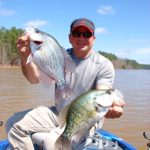
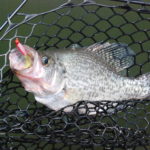
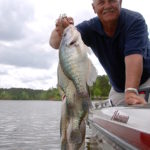
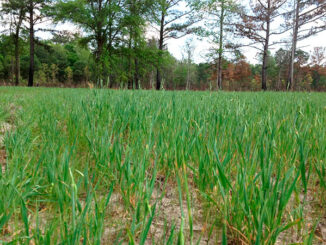
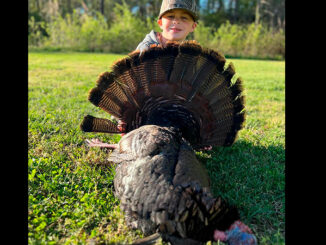
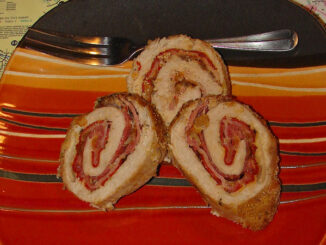

Be the first to comment